 | TODAY IN SCIENCE HISTORY NEWSLETTER - 22 NOVEMBER |
| Feature for Today |
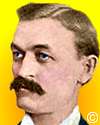 On 22 Nov 1896, the American engineer and inventor George Ferris died, leaving his name on the fairground rides known as the Ferris Wheel or the Big Wheel and modern versions built around the world. You have probably ridden one either as a child or as a tourist. On 22 Nov 1896, the American engineer and inventor George Ferris died, leaving his name on the fairground rides known as the Ferris Wheel or the Big Wheel and modern versions built around the world. You have probably ridden one either as a child or as a tourist. The London Eye owes its inspiration to Ferris. In the spring of 1892, Ferris went to the ways and means committee of the World’s Columbian Exposition with his plans for a vertical revolving wheel 250 feet in diameter and capable of carrying 2,260 people at a load. The London Eye, built in has a diameter of about 400 feet (122 m) able to carry a maximum 800 people in 32 passenger capsules. In the Report of the Committee on Awards of the World’s Columbian Commission (1901), the description of the Ferris Wheel has interesting photos showing its huge scale. Along with statistics, the details of the construction work are included. It was powered by steam engines. This informative article probably has much to add to your knowledge of this historic challenge to the Eiffel Tower. As the report states, “But mere bigness was not what was wanted—something novel, original, daring, and unique must be designed and built if American engineers were to retain their prestige and standing.” |
| Book of the Day | ||
|
| Quotations for Today | |
| There have been many authorities who have asserted that the basis of science lies in counting or measuring, i.e. in the use of mathematics. Neither counting nor measuring can however be the most fundamental processes in our study of the material universe�before you can do either to any purpose you must first select what you propose to count or measure, which presupposes a classification. | |
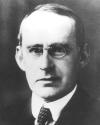 | An electron is no more (and no less) hypothetical than a star. Nowadays we count electrons one by one in a Geiger counter, as we count the stars one by one on a photographic plate. |
| [The popular impression about some chemists is that] the aquafortis and the chlorine of the laboratories have as effectually bleached the poetry out of them, as they destroy the colours of tissues exposed to their action. | |
| Quiz | |
| Before you look at today's web page, see if you can answer some of these questions about the events that happened on this day. Some of the names are very familiar. Others will likely stump you. Tickle your curiosity with these questions, then check your answers on today's web page. | |
| Births | |
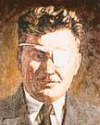 | One of the most colourful figures of the early years of U.S. aviation, was born 22 Nov 1899. He set many records. Between 15-22 Jul 1933, he made the first round-the-world solo flight (15,596 miles) in his single-engine Lockheed Vega 5B aircraft "Winnie Mae." Can you name this aviator? Can you name this aviator? |
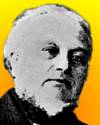 | Benedict Augustin Morel, born 22 Nov 1809, was an Austrian-born French psychologist who introduced the term dementia praecox to refer to a certain mental and emotional deterioration beginning at the time of puberty. The disorder was renamed in 1908 by the Swiss psychologist Eugen Bleuler. What is the name of the disorder, given by Bleuler, and in use today? What is the name of the disorder, given by Bleuler, and in use today? |
| Deaths | |
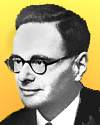 | Sir Hans Adolf Krebs (1900-1981) was a German-born British biochemist who shared the 1953 Nobel Prize for Physiology or Medicine for the discovery in living organisms of the series of chemical reactions known as Krebs cycle. What process does the Krebs cycle describe? What process does the Krebs cycle describe? |
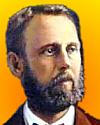 | Asaph Hall (1829-1907) was an American astronomer, discovered and named the two moons of Mars, and calculated their orbits. What names did Asaph Hall give the moon of Mars that he discovered? What names did Asaph Hall give the moon of Mars that he discovered? |
| Events | |
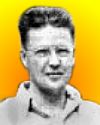 | On 22 Nov of a certain year, the first U.S. patent for a snowmobile was issued to Carl J.E. Eliason. His “motor toboggan” had ski-like front runners and a rear drive track. He later introduced an improved model. Although some vehicles before his had been made for snow travel, he is credited for creating the first reliable, self-propelled vehicle that could be manufactured on a sustained production basis. In which decade was the first snowmobile patent issued? In which decade was the first snowmobile patent issued? |
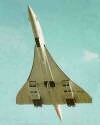 | In 1977, regular passenger service between New York and Europe on a trial basis, using the new Concorde airplane. It had already been making scheduled flights to Washington D.C. since 24 May 1976. Why was the Europe-New York service added nearly two years after service elsewhere in the world, and 18 months later than service to Washington D.C.? Why was the Europe-New York service added nearly two years after service elsewhere in the world, and 18 months later than service to Washington D.C.? |
| Answers |
| When you have your answers ready to all the questions above, you'll find all the information to check them, and more, on the November 22 web page of Today in Science History. Or, try this link first for just the brief answers. Fast answers for the previous newsletter for November 21: indium • hydrochloric acid • the weak nuclear force and the electromagnetic force • Raman scattering of monochromatic light which produces a Raman spectrum • the decade containing the year 1783. |
| Feedback |
 If you enjoy this newsletter, the website, or wish to offer encouragement or ideas, please send feedback by using your mail reader Reply button. If you enjoy this newsletter, the website, or wish to offer encouragement or ideas, please send feedback by using your mail reader Reply button. Your click on a StumbleUpon, Google+ or Facebook social button on the site webpages is also a welcome sign of appreciation. Thank you for using them. |
| Copyright |
| To find citations for quotations go to the corresponding webpage by clicking on the “quotes” balloon icon. Sources for the thumbnails appear on today's webpage with the corresponding item. � This newsletter is copyright 2013 by todayinsci.com. Please respect the Webmaster's wishes and do not put copies online of the Newsletter � or any Today in Science History webpage. (If you already have done so, please remove them. Thank you.) Offline use in education is encouraged such as a printout on a bulletin board, or projected for classroom viewing. Online, descriptive links to our pages are welcomed, as these will provide a reader with the most recent revisions, additions and/or corrections of a webpage. For any other copyright questions, please contact the Webmaster by using your mail reader Reply button. |
--
If you do not want to receive any more newsletters, Unsubscribe
To update your preferences and to unsubscribe visit this link
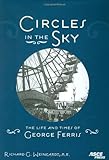

Δεν υπάρχουν σχόλια:
Δημοσίευση σχολίου